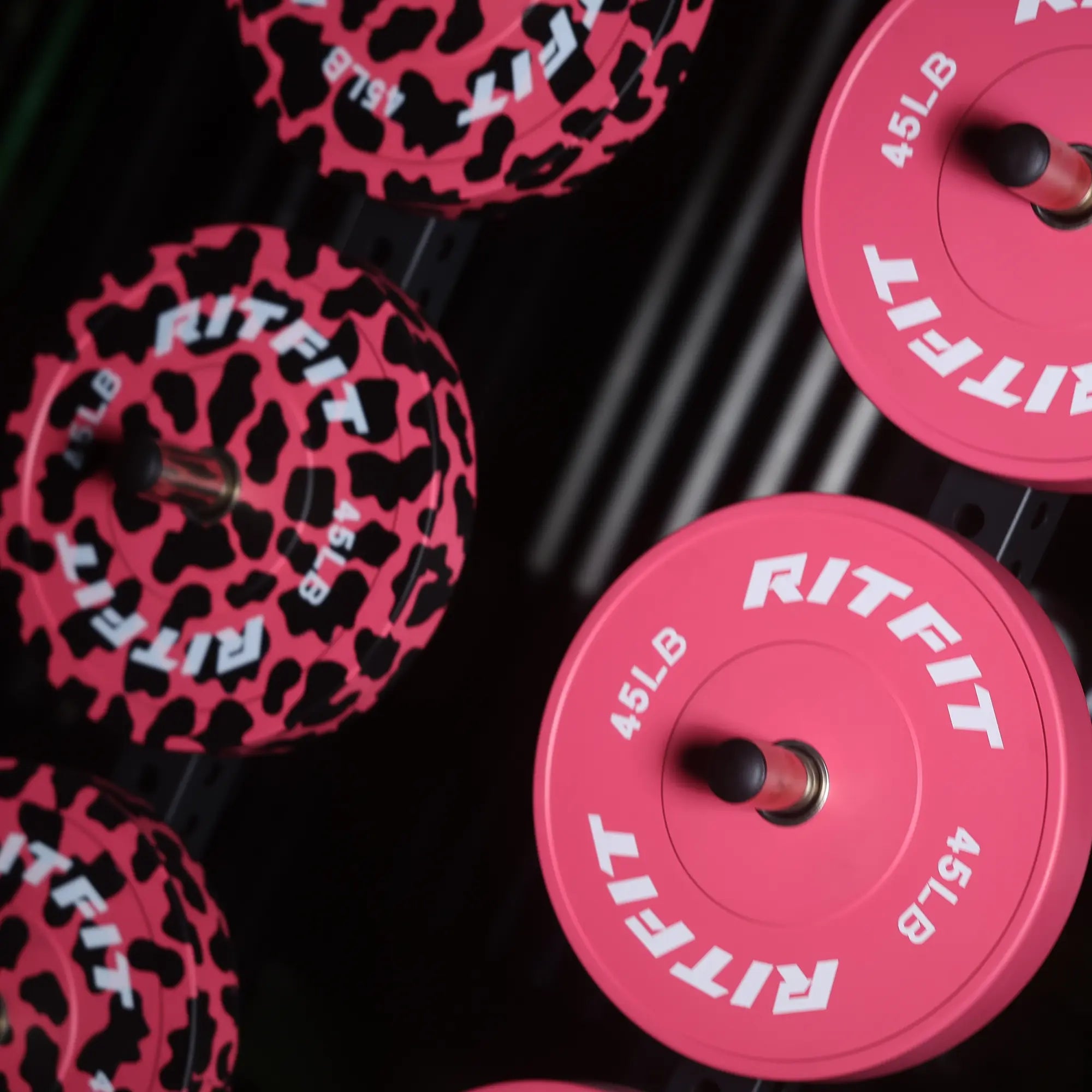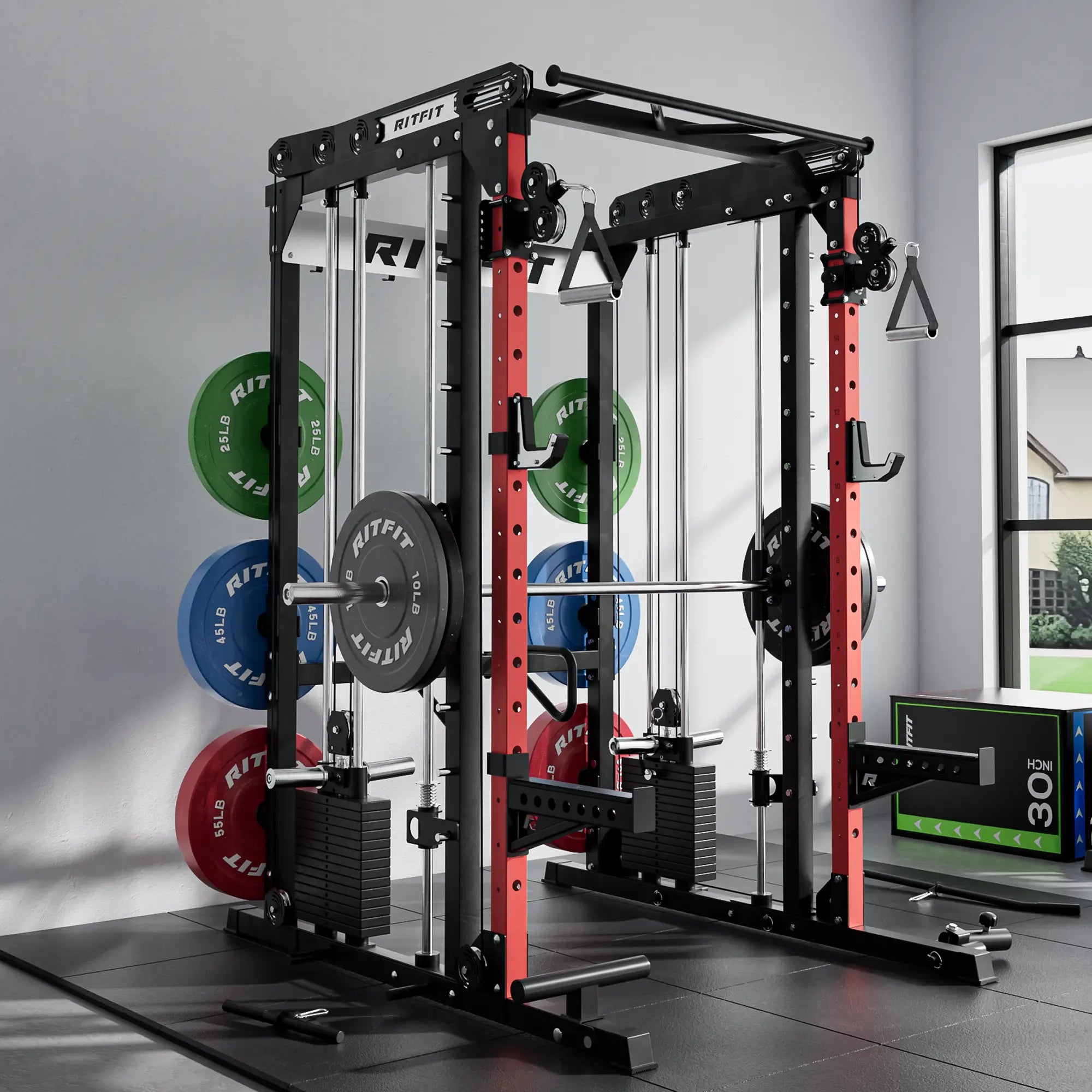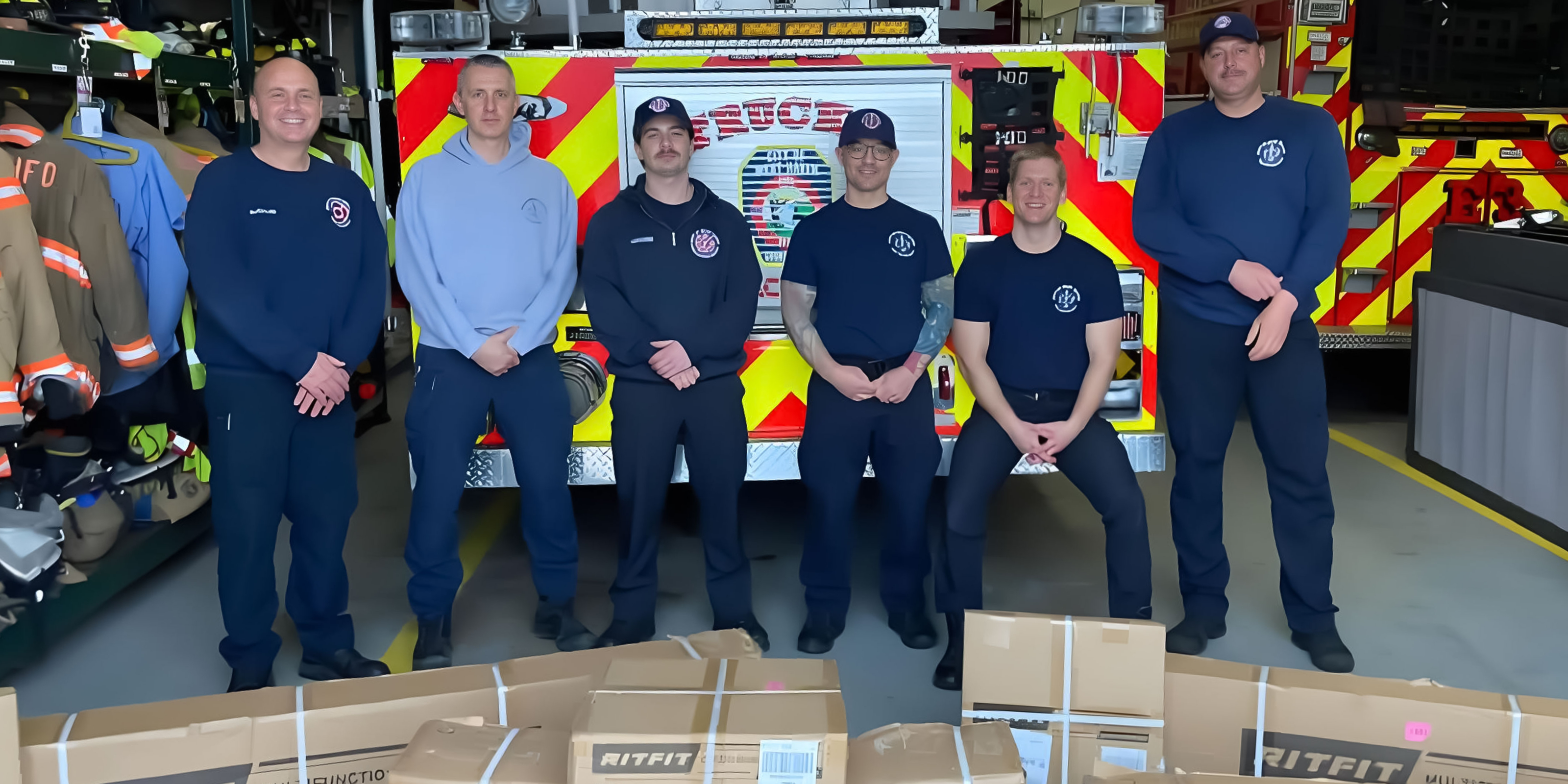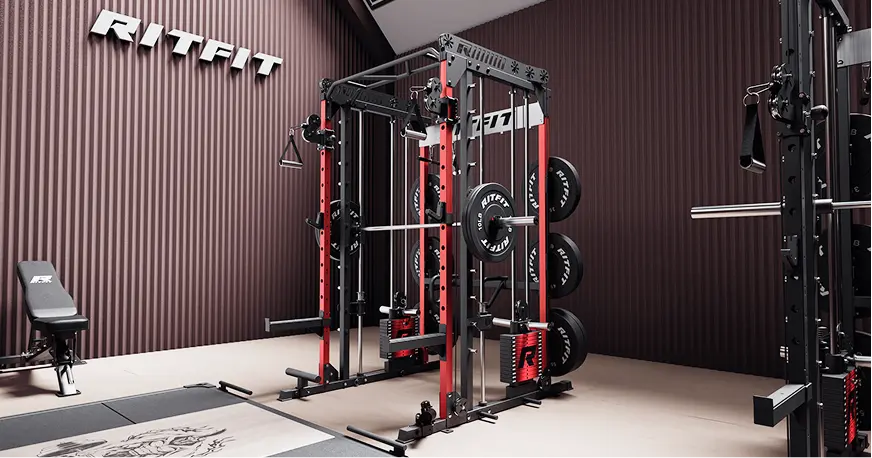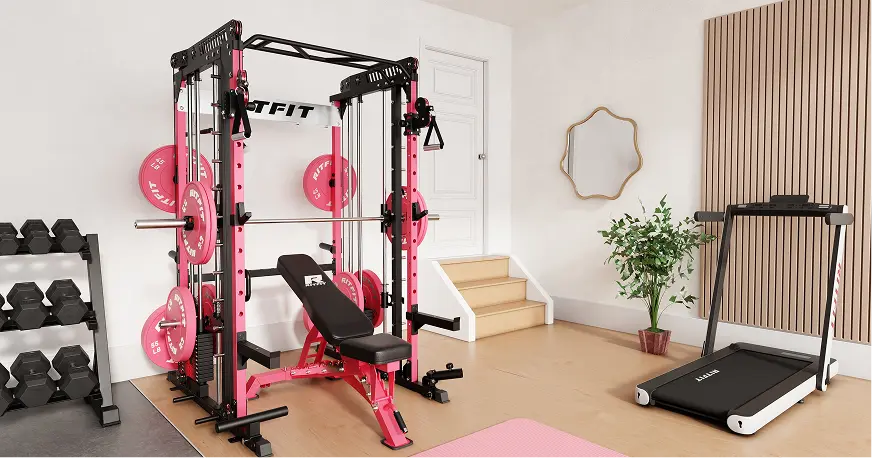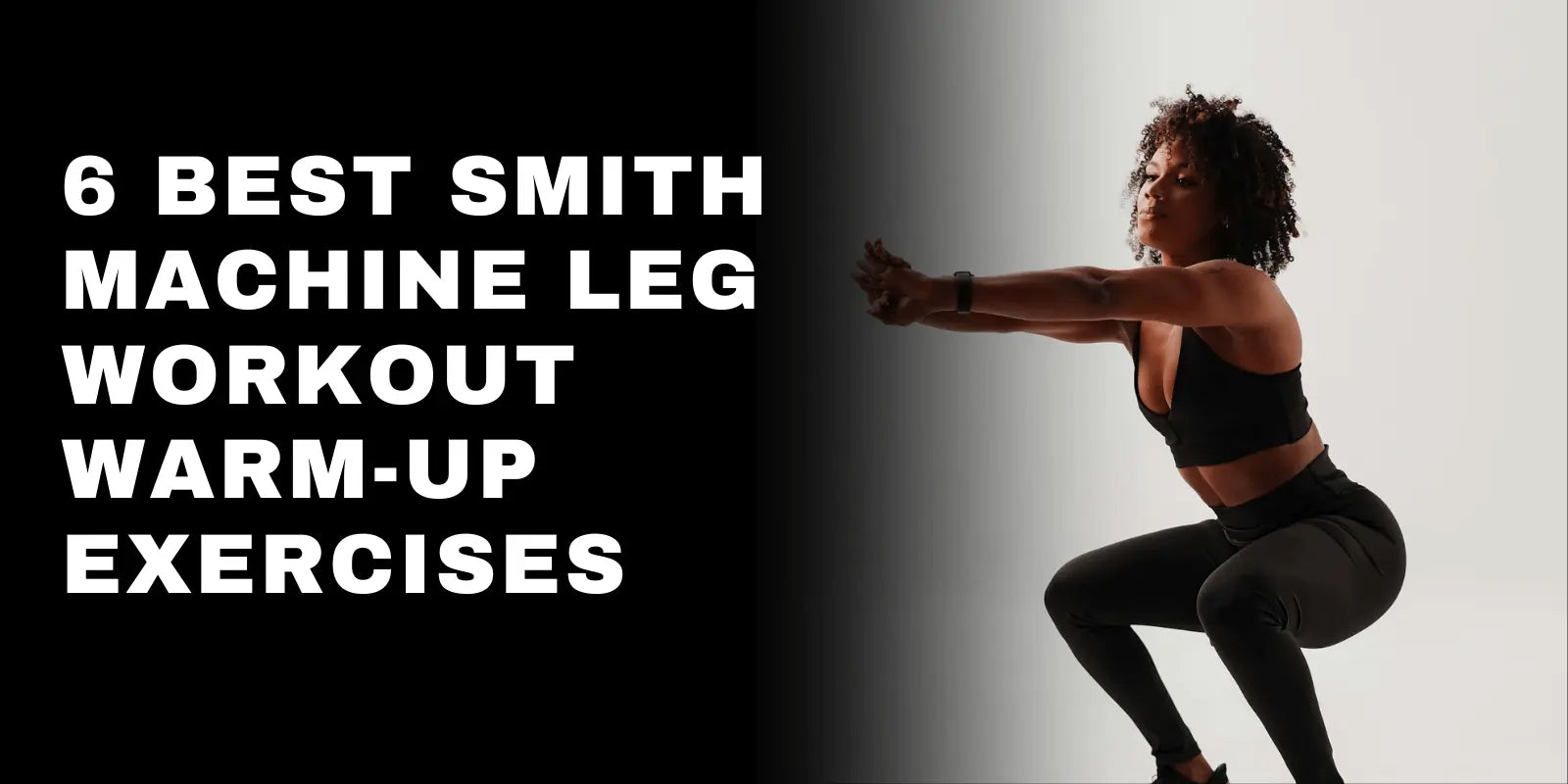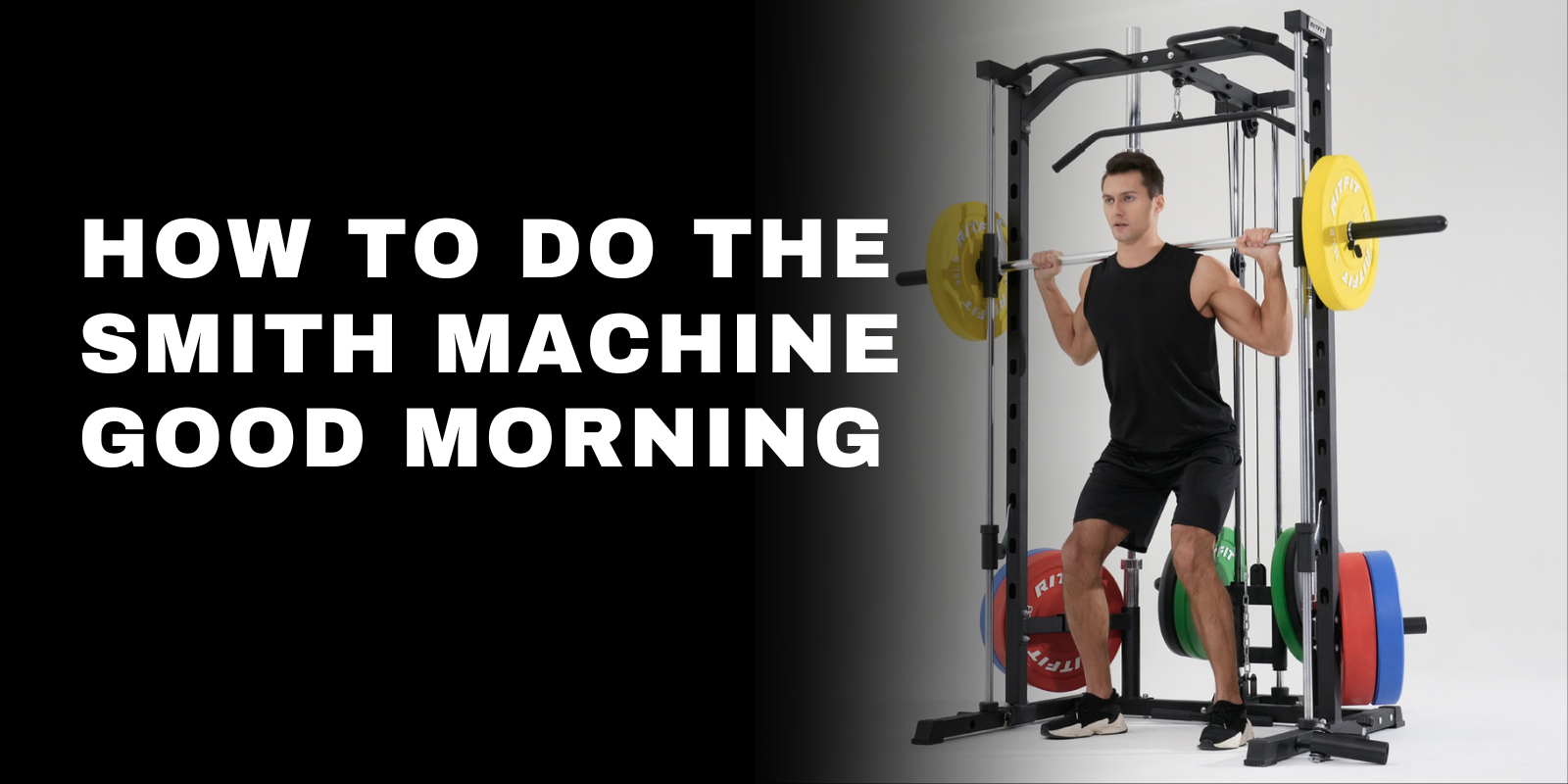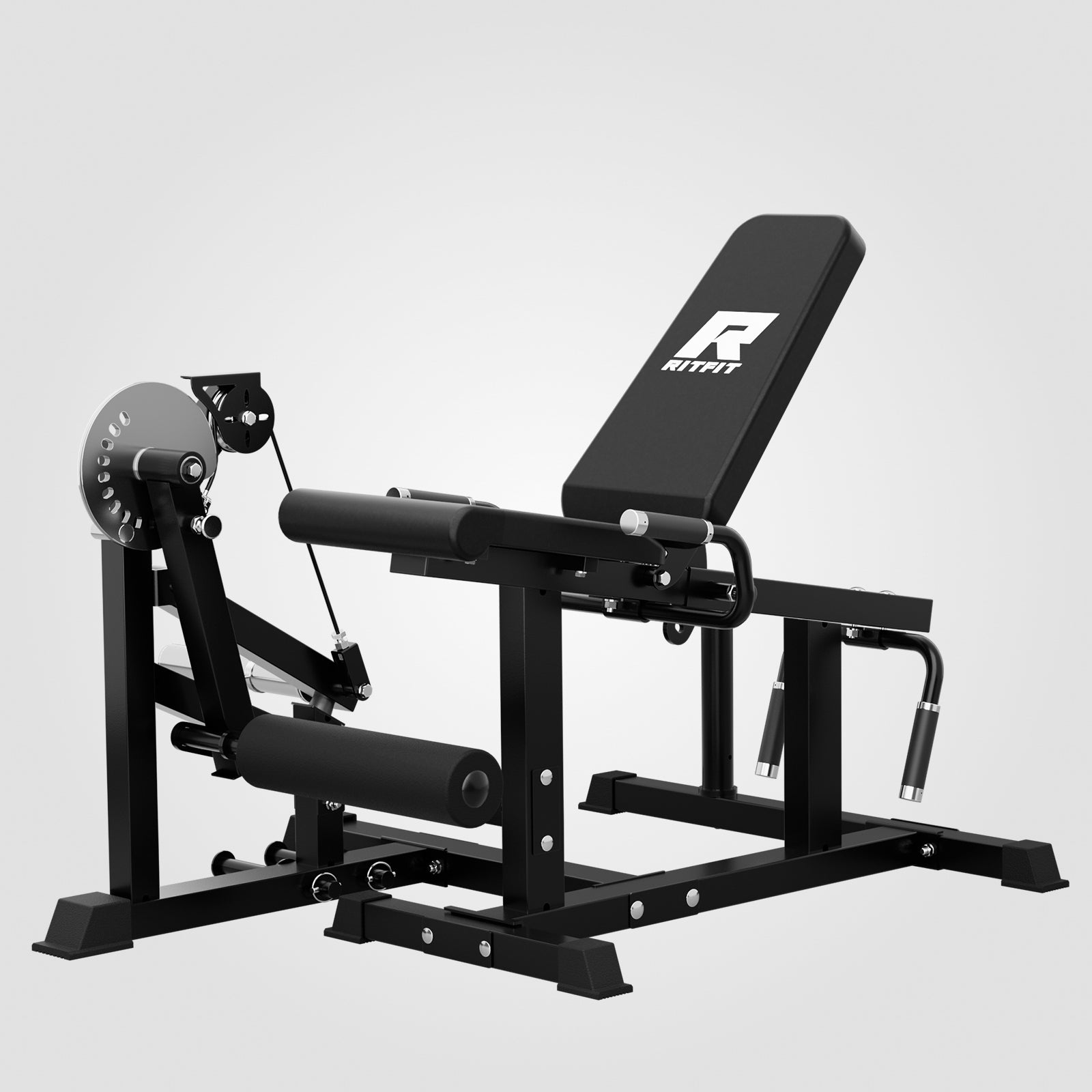Table of Contents
Smith Machine Back Workout Warm-Up Guide
Whether you’re gearing up to crush some heavy Smith machine rows or you're about to load up the bar for rack pulls, we need to have a serious chat about your warm-up.
Athletes jump straight from eight hours in a "desk posture" (hunched shoulders, tight chest) right into heavy lifting. When you combine a stiff spine with the Smith machine, which has a fixed, unforgiving path of motion, you are asking for trouble. The machine won't adjust to your stiffness; your body has to adjust to the machine. If you aren't mobile, that adjustment usually happens in your lower back or rotator cuff, and not in a good way.
Today, I’m walking you through a specific, science-backed protocol to unlock your lats, mobilize your thoracic spine, and prep your stabilizers. Let’s get your back ready to work!
The Problem: Why You Can't Just "Jump In"
The Smith machine is an incredible tool for isolation because it removes the need to stabilize the weight in space. However, that benefit is also a risk factor. Because the bar travels on a fixed rail, your joints must be capable of moving through that exact straight line.
If your spine is "cold," you lack the requisite Range of Motion (ROM). Lifting with a stiff back is like driving a car with the parking brake on. When you force a locked-up joint into a fixed machine path, you compensate with poor form, which can lead to strains or impingement. Emerging evidence supports dynamic warm-ups (vs static stretching) for enhancing performance and reducing injury risk by priming the musculoskeletal, neurologic, and cardiovascular systems.
We need to address the three planes of spinal motion: flexion/extension (bending), lateral flexion (side-to-side), and rotation (twisting). A good warm-up prepares the spine for movements you wouldn't normally do on a day-to-day basis. Since most of us sit still all day, movement is exactly what the doctor ordered.
Why This Warm-Up Matters (The Physiology)
Before we hit the floor, let's look at the "why" so you can visualize what's happening inside your body:
- Lubrication: Research shows that facet joints (spine) have a synovial membrane and a ligamentous capsule that produce synovial fluid, which helps maintain low-friction, lubricated movement. Think of your joints like an engine. Dynamic movement releases synovial fluid, which lubricates the spinal facets and shoulder joints, allowing them to glide smoothly rather than grind.
- Range of Motion (ROM): We need to unlock your full potential. If your lats are tight, you can't fully extend your arms overhead or get a full contraction on a row.
- Activation: We need to "wake up" the stabilizers—specifically the lats, rhomboids, and erector spinae. Your back is the foundation of nearly every movement. If these muscles are asleep at the wheel, your lower back takes the brunt of the load.
The 4-Phase Warm-Up Routine
Here is your 10-minute prescription to bulletproof your back.
Phase 1: The Pulse Raiser (2-3 Minutes)
Goal: Increase core body temperature.
Action: Hop on a rower (light intensity), an elliptical, or just go for a fast walk. We aren't trying to set a PR here; we just want a light sweat to make the tissues more pliable.
Phase 2: Spine Mobilization (Floor Work)
Let's hit the mats. These moves specifically target spinal health.
Cat-Camel (Cat-Cow)
The Move: On all fours, exhale and round your spine up (Cat), then inhale and arch your back, looking up (Camel/Cow).
Why: This takes your spine through safe flexion and extension, prepping the vertebrae for the heavy loading of rows and deadlifts.
Child’s Pose
The Move: From all fours, sit your hips back onto your heels and reach your arms forward on the mat.
Why: This provides a gentle, static lengthening of the latissimus dorsi (lats) and decompresses the lumbar spine.
Rock-Back Rotation (Thoracic Rotation)
The Move: On all fours, place one hand behind your head. Rotate that elbow down toward your opposite wrist, then open up and point that elbow toward the ceiling.
Why: The thoracic spine (upper back) accounts for about two-thirds of the movement in your back. If your upper back can't rotate, your lower back tries to—and it's not designed for rotation under load.
Phase 3: Dynamic Activation (Transition to Standing)
Now that the joints are loose, let's fire up the muscles.
Bird Dog
The Move: (Perform this before standing up). On all fours, extend your opposite arm and opposite leg simultaneously. Pause and squeeze.
Why: This activates the core stabilizers and the "cross-posterior chain" to protect the lumbar spine when you start lifting heavy.
Arm Circles & Torso Twists
The Move: Stand up. Perform large arm circles (forward and back) and gently twist your torso side-to-side.
Why: This loosens the shoulder girdle and prepares the oblique systems, ensuring your shoulders are ready to retract fully.
The "Ladder" Climb
The Move: Reach one arm high toward the ceiling as if climbing a ladder, then alternate. Feel the stretch down your side.
Why: This promotes lateral spine flexion and reaches the lats fully, ensuring you aren't tight on one side (which causes uneven pulling).
Phase 4: Smith Machine Specific Acclimation
This is the step people most often leave out, but it’s crucial for the Smith machine’s fixed path.
Empty Bar Good Mornings/Hinge
Place the bar at hip-level. If you are not using any weight, you can practice hinging at the hips. Determine the foot position in which your back can remain neutral to a bar that will move directly up and down (not one that travels).
Scapular Retractions ("The Hang")
Bar set high (pull-up height). Hang off it (feet on the ground if you need) and practice pulling only your shoulder blades down and back. This “wakes up” the lats and gets your shoulders ready for heavy pulling.
Feeder Sets:
On your first exercise (e.g., Smith Bent Over Row), use the empty bar for 15-20 reps to groove the path perfectly before adding a single plate.
Common Mistakes to Avoid
I need to warn you about two common pitfalls that can derail your session:
- Static Stretching Before Lifting: A key rule of sports medicine is to avoid holding long, deep static stretches right before a heavy lift. It can temporarily reduce the muscle's ability to produce force (like an overstretched rubber band). Stick to the dynamic moves listed above. Save the long holds for after the workout.
- Ignoring Rotation: Rotation is often neglected. Even though Smith machine moves are linear (up and down), you need rotational mobility to get into position and to prevent injury if you accidentally twist while loading plates or racking the weight.
Your "Cheat Sheet" Routine
| Exercise | Sets | Reps / Duration | Notes |
|---|---|---|---|
| Pulse Raiser | 1 | 2 mins | Row or Walk |
| Cat-Camel | 1 | 10 reps | Slow and controlled |
| Thoracic Rotations | 1 | 10 reps | Per side |
| Bird Dog | 1 | 8 reps | Per side (Hold for 1 sec) |
| Standing Arm Circles | 1 | 30 seconds | - |
| The "Ladder" Reach | 1 | 10 reps | Per side |
| Smith Machine Scapular Pulls | 1 | 10 reps | - |
Conclusion
Listen, taking 5 to 10 minutes to go through this routine isn't just "fluff"—it's an investment in your longevity as a lifter. By lubricating the joints and activating the right muscles, you ensure that you dominate the Smith machine rather than letting it dominate you.
Don't let a cold back freeze your gains. Warm up smart, lift heavy, and stay safe!
You've got this!
References
- Jaumard NV, Welch WC, Winkelstein BA. Spinal facet joint biomechanics and mechanotransduction in normal, injury and degenerative conditions. J Biomech Eng. 2011;133(7):071010. doi:10.1115/1.4004493
- Simic L, Sarabon N, Markovic G. Does pre-exercise static stretching inhibit maximal muscular performance? A meta-analytical review. Scand J Med Sci Sports. 2013;23(2):131-148. doi:10.1111/j.1600-0838.2012.01444.x


